Buttermilk is cherished in culinary traditions, from tenderizing fried chicken to infusing pancakes with fluffiness. However, the need for a versatile substitute is more pronounced in today's dynamic kitchen landscape. Whether it's due to dietary restrictions, availability, or a simple desire for a homemade alternative, finding a buttermilk substitute that doesn't compromise on taste or texture is crucial.
But what happens when this key ingredient is missing from your refrigerator? In this post, we will uncover buttermilk substitutes and how to substitute buttermilk to mimic the original's characteristics and open doors to new culinary possibilities.
The 7 Best Buttermilk Substitutes
1. Milk And Lemon Juice/Vinegar
Milk mixed with lemon juice or vinegar is often considered the best substitute for buttermilk due to its wide availability and convenience. These ingredients are typically kitchen staples, making it easy to whip up a buttermilk substitute without a special trip to the store.
The key to this buttermilk substitute's effectiveness lies in its acidity. Lemon juice or vinegar provides the necessary tangy flavor, closely mimicking buttermilk's natural acidity. This aspect is crucial, especially in baking, where the acid must react with leavening agents like baking soda or powder, ensuring a proper rise in baked goods. Additionally, when milk is combined with lemon juice, it slightly curdles and thickens, resembling buttermilk's consistency, which is important for the texture of certain recipes like baked goods and marinades.
To create this easy buttermilk substitute, mix 1 tablespoon of lemon juice or distilled white vinegar with 1 cup of milk using a liquid measuring cup. Stir and allow the mixture to sit for about 10 minutes. It will curdle slightly, acquiring a buttermilk-like texture and acidity.
2. Plain Yogurt
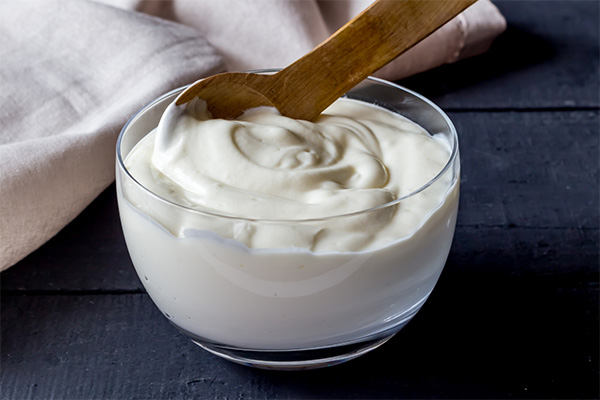
Plain yogurt is often regarded as the best substitute for buttermilk due to its similar texture and flavor profile. The creamy consistency and slight tang of yogurt make it an excellent stand-in for buttermilk, especially in recipes where the texture and tartness of buttermilk are crucial. This makes it a preferred choice for bakers and cooks who seek to maintain the integrity of their dishes. If you are using thicker consistency yogurt like Greek yogurt, it can be easily adjusted to match that of buttermilk by thinning it with a little milk or water.
The recommendation for a buttermilk substitute with yogurt is to utilize an equivalent quantity of yogurt as specified in the recipe. If you use thick yogurt like Greek yogurt, thin it by mixing three parts of yogurt with one part water or milk to achieve a buttermilk-like consistency. The ratio can be modified depending on the yogurt's thickness and the recipe's preferred texture.
Yogurt is particularly effective as a homemade buttermilk substitute in baked goods like cakes, muffins, and bread. Its acidity helps activate baking soda, contributing to a light and fluffy texture.
3. Sour Cream
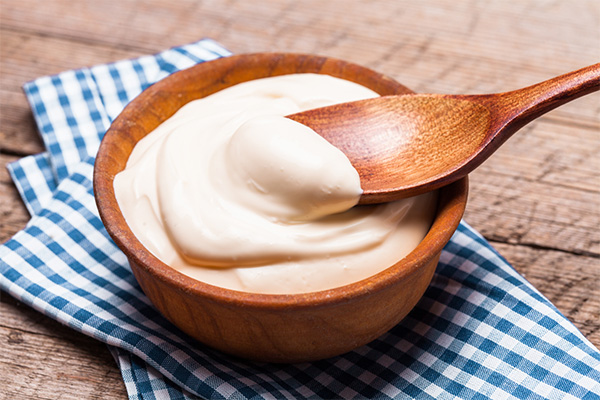
Yes, you can substitute sour cream for buttermilk! Sour cream stands out as an excellent buttermilk substitute due to its rich texture and tangy flavor, closely mirroring the qualities of buttermilk. This quality makes it especially fitting for recipes where the crucial elements include the creamy texture and subtle tartness characteristic of buttermilk. The thickness of sour cream provides a luxurious mouthfeel, and its acidity is comparable to that of buttermilk, playing a crucial role in the chemical reactions during baking, especially in activating leavening agents like baking soda.
When substituting sour cream for buttermilk, you can use a one-to-one ratio. However, because sour cream is thicker than buttermilk, it's often advisable to thin it out to achieve a consistency closer to that of buttermilk. This can be done by mixing sour cream with a little bit of water or milk. The amount of liquid needed can vary depending on the recipe and the desired consistency, but a good starting point is to add about ¼ cup milk or water to ¾ cup sour cream to replace 1 cup buttermilk.
4. Cream Of Tartar With Milk
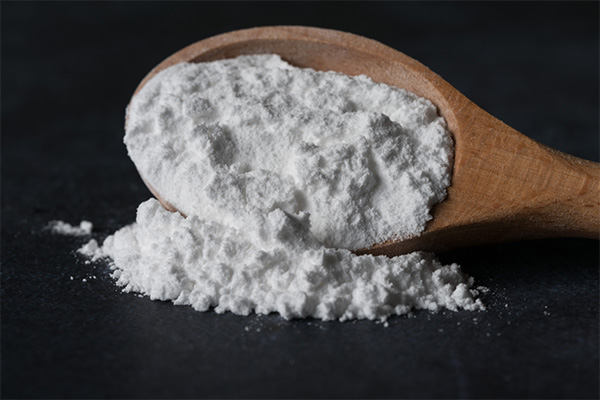
Though a less conventional substitute for buttermilk, cream of tartar can be quite effective, particularly in baking recipes. The primary reason it serves as a good alternative is its acidity. Cream of tartar, a powder derived from wine production, functions as an acid. Combined with milk, it mimics the acidic conditions that buttermilk offers, which is crucial in activating baking soda in recipes. This acid-base reaction is crucial for leavening baked goods, helping them rise and achieve the desired texture.
For buttermilk substitute, a mixture of approximately 1.5 teaspoons of cream of tartar for every cup of milk. This mixture should be well stirred and allowed to sit for a few minutes to let the cream of tartar dissolve and slightly acidify the milk.
Cream of tartar is especially beneficial in recipes where a subtle tangy flavor is desired but without the additional moisture that liquid buttermilk would introduce. However, it's important to note that while the cream of tartar can mimic the acidity of buttermilk, it does not provide the same creamy texture and rich flavor, so it may be more suitable for recipes where these characteristics are not paramount.
5. Non-Dairy Milk And Acid
The combination of non-dairy milk and an acid like apple cider vinegar, white vinegar, or fresh lemon juice is a highly effective and versatile buttermilk substitute, particularly valued for its suitability in vegan and lactose-free diets. This vegan buttermilk substitution captures the essential qualities of buttermilk - acidity and creamy consistency - without using any dairy products. Here are some of the best non-dairy products that you can use:
Soy Milk
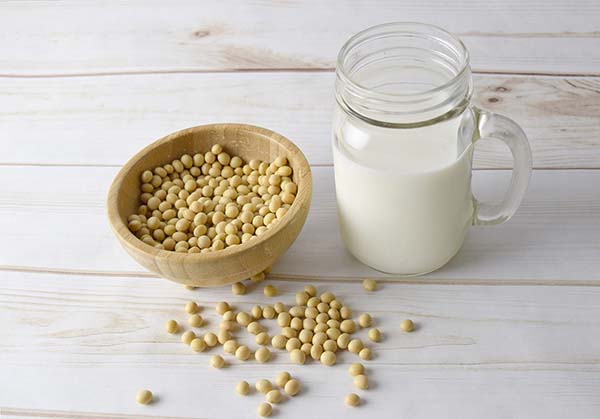
Soy milk, when combined with an acid such as vinegar or lemon juice, serves as an excellent buttermilk substitute. It boasts a high protein content comparable to regular milk, making it a great choice for those seeking a protein-rich option. One of the key advantages of soy milk is its neutral flavor profile, which becomes even more adaptable to various recipes once it is acidified.
Almond Milk
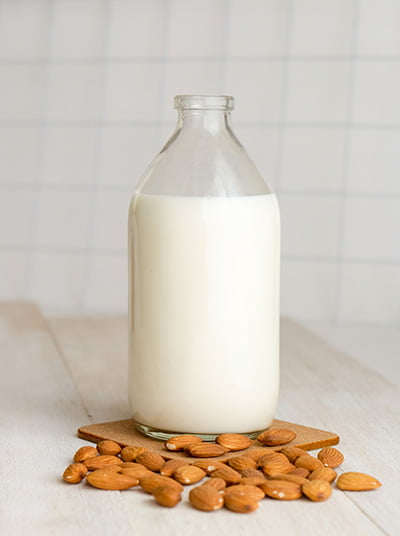
Almond milk, when acidified, is another popular alternative. Almond milk's slightly sweet and nutty flavor can also enhance the taste of baked goods. It is generally effective in most baking recipes. On the downside, almond milk is lower in protein than cow's milk and soy milk, and it is unsuitable for individuals with nut allergies. Furthermore, its nutty essence might not be the best fit for savory dishes, potentially limiting its versatility.
Coconut Milk
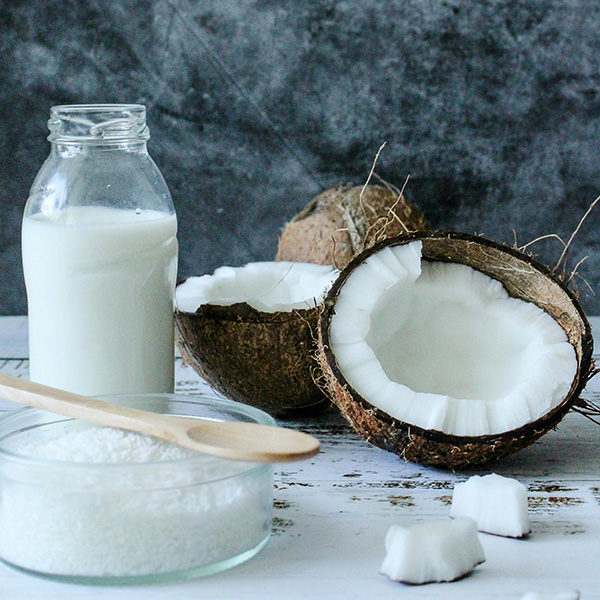
Coconut milk combined with an acid is known for its rich and creamy texture, which can add a luxurious richness to recipes. This milk substitute is versatile enough for sweet and savory recipes, making it a flexible ingredient in the kitchen. Additionally, lactose-free accommodates the dietary needs of individuals with milk allergies, ensuring they can enjoy a variety of dishes without concern. Despite its advantages, coconut milk is high in saturated fats and might not be the healthiest option for everyone. Its distinct coconut flavor could also overshadow other flavors in some recipes, making it less versatile in certain culinary applications.
Oat Milk

Oat milk mixed with an acid offers a creamy texture well-suited for baking and cooking. Its natural sweetness can lessen the need for additional sugars, and it boasts a good nutritional profile, including fiber. Nevertheless, oat milk tends to have a higher calorie and carbohydrate content compared to other non-dairy milk options. When making oat milk at home, there's a possibility it might separate if acid is added, which can be a drawback for certain uses.
Rice Milk
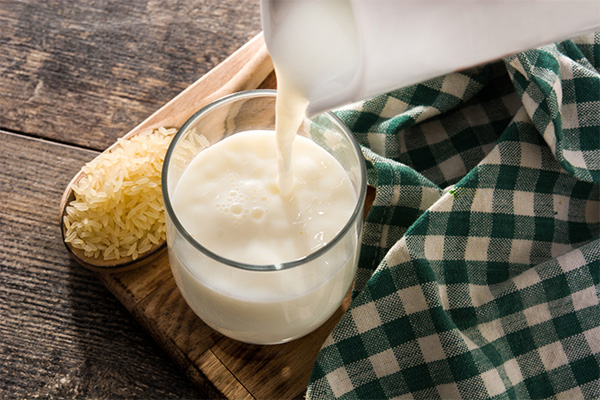
Rice milk acidified with lemon juice or vinegar is the most hypoallergenic milk alternative, making it an excellent choice for individuals with multiple allergies. Its sweet and light flavor is particularly well-suited for desserts. Rice milk is also low in fat. Nevertheless, its low protein content and watery consistency might not provide the desired creaminess in some recipes, and it may not perform as well in recipes that require a thicker consistency.
To create this non-dairy, vegan buttermilk substitute, the recommended ratio is similar to milk, vinegar, or lemon juice: add 1 tablespoon of white vinegar or lemon juice to 1 cup of non-dairy milk. Let it sit for about 5-10 minutes before use. This mixture can typically be used as a direct replacement for buttermilk in many recipes, especially useful in baking, where buttermilk's role is not just for flavor but also for its chemical interaction with leavening agents like baking soda. If nut milk is unavailable and you seek a dairy-free buttermilk substitute, you can make nut milk right at home.
6. Kefir
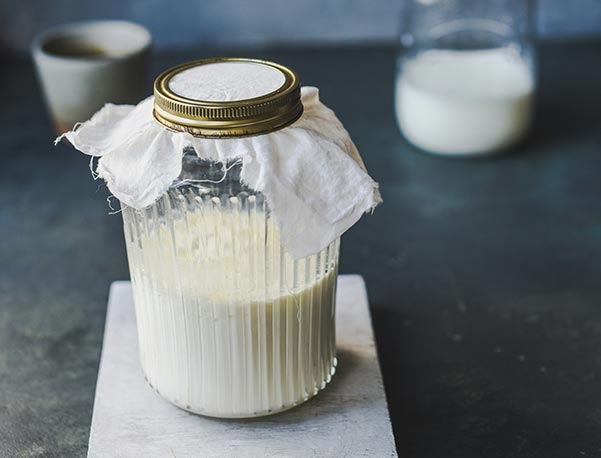
Kefir stands out as an excellent buttermilk substitute for buttermilk due to its similar consistency and natural tanginess. As a fermented milk drink, kefir shares many of the characteristic flavors and textures of buttermilk, making it a near-perfect alternative.
One key reason it's so effective is its acidity. Like buttermilk, kefir is slightly acidic, which is essential in recipes that rely on an acid-base reaction for leavening, particularly in baking. The acidity plays a crucial role in activating baking soda or baking powder, thereby enhancing the leavening and texture of baked goods.
When substituting kefir for buttermilk, you can generally use a one-to-one ratio. This means that if your recipe calls for one cup of buttermilk, you can replace it with one cup of kefir. This direct substitution is convenient and maintains the integrity of the recipe's texture and flavor.
7. Buttermilk Powder
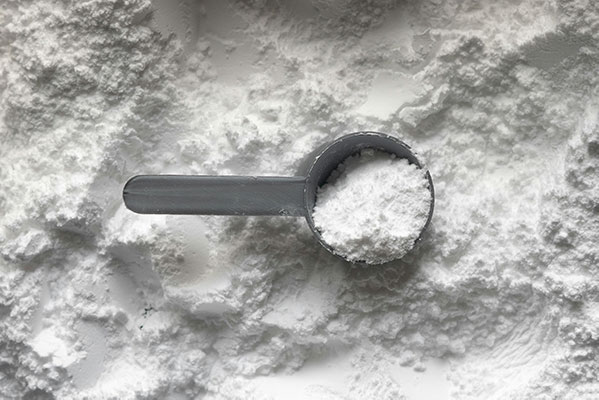
Buttermilk powder is an easy buttermilk substitute, particularly because it offers the closest approximation to the real thing in both flavor and chemical properties. As a dehydrated form of buttermilk, this powder retains the essential characteristics of buttermilk, including its acidity and rich flavor profile. One of the key advantages of using powdered buttermilk is its shelf stability and long shelf life, making it a convenient option to have on hand, especially for those who do not use buttermilk regularly.
To utilize powdered buttermilk, it's necessary to reconstitute it with water as per the instructions provided on the package. Typically, the ratio involves mixing a certain amount of powdered buttermilk with water to create a liquid that closely resembles fresh buttermilk. For instance, a common ratio might be ¼ cup powdered buttermilk to 1 cup water, but it's important to follow the specific instructions on your product.
Powdered buttermilk is particularly useful in baking, where its acidity is crucial for interacting with leavening agents like baking soda, helping baked goods rise and achieve the desired texture. It's also convenient for recipes where the liquid content is critical, as you can adjust the thickness of the reconstituted buttermilk by altering the amount of water used. This buttermilk substitute is ideal for pancakes, biscuits, cakes, and bread, as well as marinades and salad dressings.

